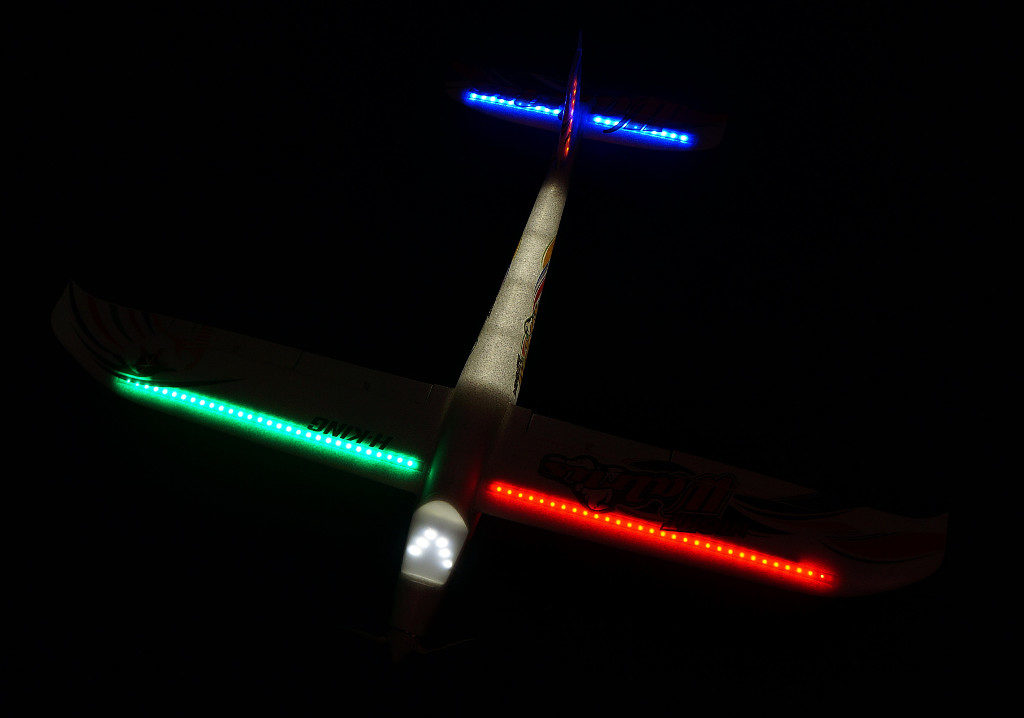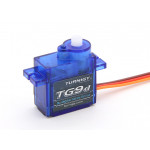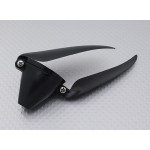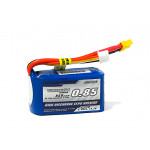
Written by RomanRadtke
Every RC pilot sooner or later will probably have a bunch of different models.
I really love FPV flying and have a few pretty fast FPV wings besides masses of other planes and copters that give me the adrenaline rush that I sometimes need.
Sometimes… But…
There are stressful days where I only have limited time in the evening and when I am in need of some relaxation. On those days I pull out my tried and true Bixler 1 or, to be more precise, my tried and true "Hot glue mess". It is the plane I learned flying with. I crashed it a hundred times, repaired it, flew it, and crashed it again. I do not crash it that much these days. Having installed some LEDs to it has made it even more versatile.
But let’s be honest: the thing is, not only is it ugly (remember 99% hot glue)- but also gliding is next to impossible due to its gained weight.
What to do?
Frequently checking the HobbyKing New Items page, I finally found the solution.
I have flown the Walrus that a friend owned and already thought this might be a perfect plane for "these days". Seeing that there is a new version with night lighting and other improvements now I HAD to pull the trigger- a formidable sailing plane with a wide flight envelope and flashy LEDs already pre-installed for that price? PnF?!
Seems to be a no-brainer- right? Let’s see!
The Walrus comes neatly packed in a pretty small long package. Assembly is a breeze. The decals are nicely attached and the foam is of good rigid quality. All parts fit together perfectly. The small parts also are of good quality. Only a few of the holes in the control horns needed to be widened with a small drill. The user manual is a nice colored booklet and it makes perfect sense - no-nonsense, good stuff!
 The only downside so far is that even though the plane's belly is “cute and chubby”, there is not much space inside the canopy. Things are pre-installed, so no big deal or fuss. It is still a bit fiddly to install the receiver and battery. I mounted both the receiver and the ESC with Velcro in order to be able to remove them easily whenever needed.
The only downside so far is that even though the plane's belly is “cute and chubby”, there is not much space inside the canopy. Things are pre-installed, so no big deal or fuss. It is still a bit fiddly to install the receiver and battery. I mounted both the receiver and the ESC with Velcro in order to be able to remove them easily whenever needed.
Esc and RX Mounting The antennas fit perfectly under the new plastic fuselage protection- it is only a small detail but I really like it. Routing the wires of the wing is not too comfortable, so I think I probably will leave them attached to the plane or just hot glue servo extensions in some holes in the canopy like I did with my Bixler. Some people complained about the screws to secure the wings (same as with the old Walrus) but I have no problem with them so far.
Independent of this, the whole assembly process probably takes about 45 minutes- if at all. When your packs are charged the assembly should be done!
This being the first “full house” plane that I own, with 4 control surfaces in the wing, I decided to have “full control” and used a FrSky X8R 8 channel receiver. This way I can control everything independently and use all sorts of possible mixing: Camber, Reflex, Crow, Full span ailerons, and Snap flaps. A good explanation of all these possibilities can be found on http://www.rc-airplane-world.com/rc-glider-wing-setups.html
The Walrus should be forgiving enough to not crash immediately when the mixing is subpar, so it also seems to be well suited to be my guinea pig.
Suggested CG is 71 mm from the beginning of the wing according to the manual.
I choose a 3S 3000mAh battery instead of the 2200mAh because this is what I had on hand. I mounted it with the supplied Velcro as described in the manual to be able to adjust the CG later if needed.
First light: Wow!!
Usually, it is somewhat exciting to connect the battery for the first time and I am always waiting for at least some of the magic smoke to escape (usually my models are “ultra high tech home-brew” with tons of electronics). This time: no magic smoke, just a sense of delight: what a nice illumination! Even with full daylight in my workshop, the illumination is clearly visible.
Finally, the weather got better sooooo…
First flight: Again: Wow!!
 Mixing for the first flight[/caption] For the first flight I took a pretty conservative approach on the mixing. I deflected the ailerons 100% and the flaps 50% in the same direction.
Mixing for the first flight[/caption] For the first flight I took a pretty conservative approach on the mixing. I deflected the ailerons 100% and the flaps 50% in the same direction.
The motor has enough power for a really easy hand launch, even for a pilot with little experience. It does not climb vertically but reaches a good height within just a few seconds. It reacts well to stick inputs and has no tendency to stall even when flying really slow. It is not a super fast model but this could be expected, and actually, this was what I wanted, a nice gentle relaxing flyer! Even landing (remember- the critical part of the flight- especially for a beginner) is a breeze. Also learning simple aerobatics is easy with this model- just make sure you have enough height and "go for it".
Customers have complained about a few problems with ESCs in the “old” walrus. This should be a thing of the past now because the Night Walrus has a new ESC in the form of an Aerostar 30amper and so far everything is running smoothly.
I am really happy to have pulled the trigger on this plane before it sold out (I hate it when things are out of stock) because I really like it so far.
The Night Walrus, with its gentle flying characteristics, seems to be the perfect solution, not just for the beginner but for most. I am not the best LOS pilot in the world but had no problems with this plane at all. If you, like me, want to take the next step to a “full house” E-glider or just want a nice, gentle flyer for relaxed flying this might also be a great plane for you. It really looks nice and gives you the ability to do night flying without further modifications, too - big fun! The build quality also looks promising and from what I know the weak points of the first version of the Walrus have been improved.
So I still think it is a no-brainer!
Hear it First: Join our Mailing List
Sign up to receive new product updates, exclusive discounts, news, and more!









